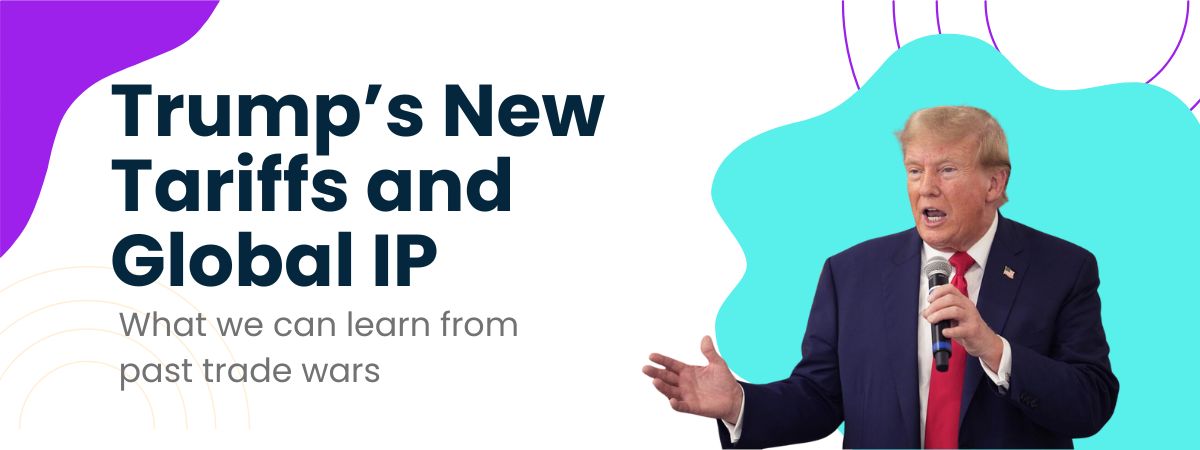The recent implementation of significant tariffs by President Trump on imports from major economies—including China, the European Union, Japan, and South Korea—has reignited discussions about the potential global ramifications of protectionist trade policies. Such measures have historically influenced various aspects of international business operations, notably in the realms of intellectual property (IP) filings and renewals. By examining past instances of trade conflicts, we can gain insights into how current policies might shape global IP strategies.
Historical Precedents: Trade Conflicts and Their Impact on Intellectual Property
1. The Smoot-Hawley Tariff Act (1930)
Enacted during the onset of the Great Depression, the Smoot-Hawley Tariff Act raised U.S. tariffs on over 20,000 imported goods, aiming to protect American industries. However, this move led to retaliatory tariffs from numerous countries, resulting in a significant contraction of international trade.
Impact on Global Trade:
- Global trade declined by approximately 66% between 1929 and 1934.
Impact on Intellectual Property:
- The economic downturn and reduced international collaboration led to a decline in patent filings, as companies prioritized immediate survival over innovation.
2. U.S.-Japan Trade Disputes (1980s)
During the 1980s, the U.S. faced significant trade imbalances with Japan, particularly in the automotive and electronics sectors. In response, the U.S. imposed tariffs and sought voluntary export restraints from Japan.
Impact on Global Trade:
- Japanese companies responded by establishing manufacturing plants in the U.S. to circumvent tariffs, leading to increased foreign direct investment.
Impact on Intellectual Property:
- The establishment of Japanese manufacturing in the U.S. led to increased patent filings by Japanese firms seeking to protect their innovations in the American market.
3. U.S.-China Trade War (2018–2019)
Initiated by the U.S. imposing tariffs on Chinese goods citing unfair trade practices and intellectual property theft, this period saw escalating tariffs between the two nations.
Impact on Global Trade:
- Bilateral trade between the U.S. and China decreased, leading to shifts in global supply chains as companies sought to mitigate tariff impacts.
Impact on Intellectual Property:
- The trade war prompted discussions on strengthening IP protections and led to shifts in patent filings, with some companies diversifying their IP portfolios to include other jurisdictions.
Potential Implications of Current Tariffs
Drawing from these historical examples, the recent tariffs imposed by President Trump could have several implications:
- Shift in IP Filing Strategies: Companies may reconsider where to file patents and trademarks, focusing on jurisdictions less affected by trade tensions.
- Increased Costs and Budget Reallocations: Higher operational costs due to tariffs might lead businesses to prioritize essential IP filings and delay others.
- Supply Chain Reconfigurations: As companies adjust their supply chains to mitigate tariff impacts, new markets may emerge as focal points for IP protection.
Regional Impacts
North America
- United States: Domestic industries might experience short-term protection; however, retaliatory tariffs could harm exporters, leading to a complex environment for IP strategy.
- Canada and Mexico: As part of the USMCA, these countries might see shifts in trade dynamics, influencing IP considerations for companies operating across these borders.
Outside North America
- European Union: Facing tariffs, EU exporters may seek to strengthen IP protections in alternative markets or invest in local production facilities to bypass trade barriers.
- Asia: Countries like China and Japan may accelerate efforts to innovate and protect domestic industries, potentially leading to an increase in local patent filings and a focus on self-reliance in critical technologies.
Conclusion
The imposition of new tariffs by the U.S. government has the potential to reshape global trade patterns significantly. Historical instances demonstrate that such protectionist measures often lead to unintended consequences, including shifts in intellectual property strategies. Companies must remain vigilant, adapting their IP portfolios and business operations to navigate the evolving economic landscape effectively.



